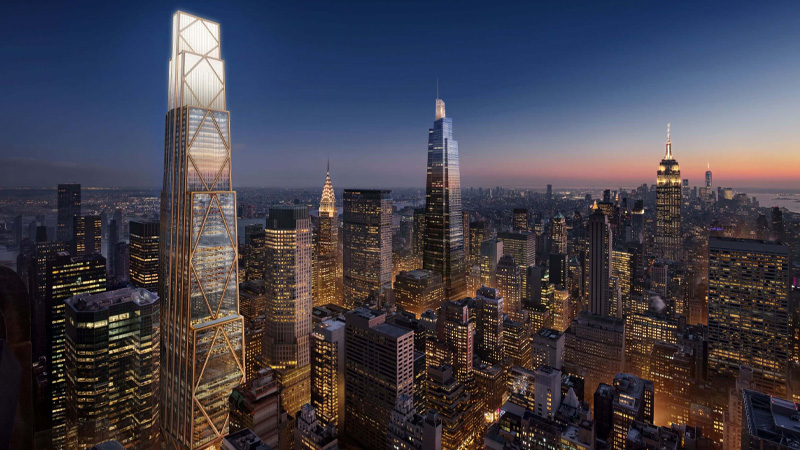JPMorgan Chase is currently constructing a new headquarters building to meet the needs of our workforce decades into the future. Reflecting the growing need for healthy and sustainable buildings, the 1,388- foot, 60-story skyscraper is expected to be Manhattan’s first all-electric tower with net zero operational emissions. The design also considers indoor air quality and aims to exceed the highest industry standards in sustainability, health and wellness. In order to strengthen and guide the design and construction process, we have aligned and plan to seek final certification to the Leadership in Energy and Environmental Design ("LEED") Platinum v4. During demolition, we recycled, reused or upcycled 97% of the materials from our previous building, exceeding the LEED Platinum requirement by over 20%. We also utilized flexible and adaptable design strategies to drive embodied carbon reductions by using innovative materials with lower carbon content, planning for circularity at end of life and placing an increased emphasis on minimizing waste.
In addition to achieving net zero operational emissions, the new building plans to use several state-of-the-art technologies and systems to boost efficiencies, including:
- Intelligent building technology that uses sensors, artificial intelligence ("AI") and machine learning systems to predict, respond and adapt to energy needs.
- Advanced water storage and reuse systems to reduce water usage by more than 40% as compared to industry standard.
- Triple pane glazing on the facade and automatic solar shades connected to heating, ventilation and air conditioning ("HVAC") systems for greater energy efficiency.
The building is expected to contain many occupant health and well-being features, including:
- Doubling the amount of outside, fresh air and continuously monitoring air quality to improve the overall health and wellbeing of employees.
- Bringing nature indoors through biophilic design, including wide use of natural plants and healthier furniture and building materials.
- Bringing in 30% more daylight and using circadian lighting to minimize the effects of electric light and support a healthier indoor environment, as compared to industry standard.





